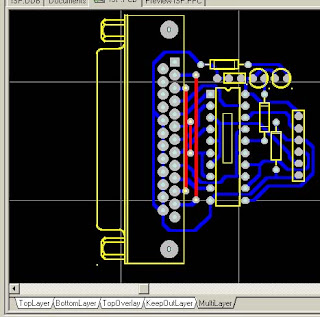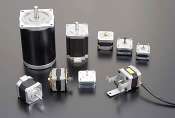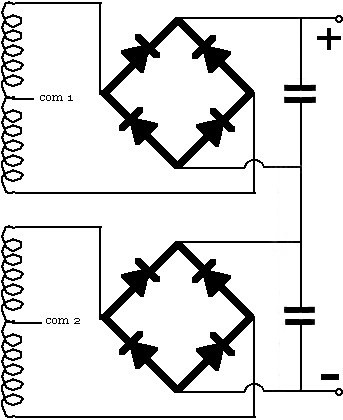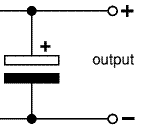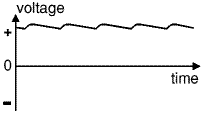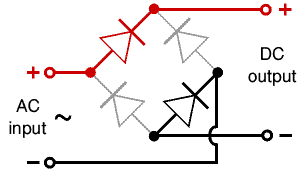Many of us remember the TV show Knight Rider, watching with envy as Michael Knight controlled and monitored his car KITT with simple commands from miles away. Although today's technology hasn't quite matched 1980's television fantasy, auto security companies such as Audiovox, AutoPage and CompuStar have developed products that allow users to control and monitor their vehicles over great distances via two-way communication.
The ability to start a vehicle via remote isn't exactly breaking news, with auto security manufacturers offering the technology for well over a decade. These remote start and security systems have always been limited by the effectiveness of the transmitter, but the increasing use of two-way technologies is changing that. In a two-way remote start and security system, the remote acts as a transmitter and receiver, displaying the vehicle status via a compact LCD display. These systems are usually coupled with extended range windshield-mounted antennas that allow the remote to maintain contact with the vehicle at distances, conditions permitting, of over a half mile.
With that said, it's time to see the latest two-way remote start security systems that Audiovox, AutoPage and CompuStar have to offer.
CompuStar P2W900FM-ASWhile CompuStar may be the least familiar name of the group, from their very beginning they've been manufacturing two-way remote start systems. Founded in 1998, CompuStar was one of the first to offer FCC-compliant two-way systems and were also the first to use 900MHz for their two-way communications. Not willing to rest on their laurels, CompuStar has added some noteworthy features to their latest product from their Pro Series line - the P2W900FM-AS.
The two-way remote, with its sleek, almost sexy, black and chrome housing, indicates some serious style was in mind with the design. The LCD display dominates the face, while the four buttons occupy the side, allowing CompuStar to have the largest LCD display of the group. Its rubber buttons were the only ones in the group that didn't rely on icons - instead they are embossed with easy-to-identify Roman numerals. With most alarm systems on the market, advanced functions often require a combination of button presses on the remote to execute a desired command. CompuStar is no exception, but they've simplified this procedure by including a "cheat-sheet" on the back of the remote that explains how to activate the desired function. Press any button on the remote and a signal strength indicator will appear letting the user know just how much range (up to 3,000') they have left.
The CompuStar P2W900FM-AS was the only remote-start in the group that would work in a vehicle equipped with either a manual or automatic transmission. For safety reasons, most remote start products are designed only to work on vehicles with automatic transmissions. Vehicles with manual transmissions could be unintentionally left in gear, which could cause personal or property damage if the vehicle was remote started. CompuStar overcomes this hurdle by requiring a couple of steps to be completed before the user remote starts their vehicle. These simple steps ensure that the vehicle was idling in neutral before the vehicle was shut off, and if no doors are opened between the time the vehicle shut down and the remote start was activated, the P2W900FM-AS will allow the car to remote start. The remote will even tell the user if their manual-transmission equipped vehicle is safe to start via a small key icon on the display.
In addition to manual-transmission capability, the CompuStar comes with other features that should make this alarm an installer's favorite. As with the AutoPage, the CompuStar features an RS232 serial port that allows the alarm brain to be directly connected to an iData Link transponder bypass module for easier remote-start integration. The RS232 is also compatible with CompuStar's new GPS and cellular tracking unit that allows the vehicle to be controlled anywhere within the Cingular cellular network via e-mail, phone text messaging or online software. The P2W900FM's hideaway brain also features a dedicated back-up battery input - ensuring that the vehicle will be protected even if the main battery is tampered with, while at the same time simplifying the install. For those who dislike counting chirps and LED flashes, the P2W900FM-AS was the only alarm in this comparison that could be programmed with an optional handheld programmer. The hideaway brain of the P2W900FM-AS is even flash-programmable for the ultimate level of control.
Remote-start systems are all about convenience - especially for those who live in areas with extreme temperatures. The P2W900FM-AS comes with a temperature sensor that allows the car to automatically start when the user-selectable hot or cold temperature setting is reached. Now during harsh summers or winters, the user can relax, knowing that the CompuStar P2W900FM-AS is keeping the vehicle interior at the ideal temperature.
Although the CompuStar P2W900FM-AS was the most expensive of the group, the price was easily justified by the amount of features the alarm offered. It also had the best range of the three products reviewed here, albeit the stated range worked only under optimal conditions. For those wishing for a high degree of security, control and convenience in a well-designed package, CompuStar is definitely one worth checking out.
udiovox APS-998Of the group, the Audiovox brand is probably the best known - with good reason. Audiovox has been in the car audio and electronics industry business for over 40 years. The APS-998 Dot Matrix Remote Start System is representative of their years of experience in consumer electronics and automotive security. The company even goes as far to back up their already impressive track record with a $2,500 limited warranty. If, while equipped with their anti-theft system, the vehicle were stolen and declared a total loss, Audiovox would pay up to $2,500 towards the vehicle's comprehensive insurance deductible.
One of the biggest highlights of the Audiovox APS-998 system is the two innovative remotes. Audiovox includes two remotes, a larger two-way remote and a smaller one-way remote that can be given to an additional user. Both remotes are constructed with rubberized casings edged in a carbon-fiber trim. For signal transmission, Audiovox uses the 433.9MHz frequency to allow up to a quarter mile of range.
Out of the alarms reviewed, Audiovox was the only one to use a dot matrix LCD screen on the two-way remote. The dot matrix display allows the user to select either an icon- or text-based display. If the user decides to use the remote in text mode, they can also select text in English, Spanish or French. The remote also lets the user create a custom text message that can be displayed on the remote's default screen. In addition to being the only remote in this comparison with a dot matrix display, the APS-998's two-way remote features multiple background illumination colors. When certain transmitter functions are used, the background illumination will change accordingly - red for armed, green for disarmed and blue for remote start activated. To preserve battery life, the two-way remote display goes blank after 30 seconds of inactivity. Not to be overlooked, the one-way remote makes up for the lack of an LCD display and two-way capability with a smaller, slimmer size and built-in LED flashlight.
For remote start functions, the APS-998 offers a number of convenient features. The remote start process starts when the button with the key icon on either remote is pressed twice within two seconds. Once the vehicle has started it will continue to run for the programmed duration (five, 10, 15 or 20 minutes). For those who live in areas with extreme winter conditions, the APS-998 can be programmed to start the vehicle every two or four hours over a 48-hour period, keeping the engine and fluids warm. If the vehicle happens to be equipped with a turbo system, the APS-998 is equipped with a turbo-timer that will allow the car to cool down as it idles for three, five or 10 minutes before shutting down.
For the professional installer, Audiovox provides a well-written installation manual to ensure a straightforward install process. Beyond the remote start, security and keyless entry functions, the APS-998 features four additional output channels that can be connected to control (with additional parts, not included) features such as trunk release, window roll-up, garage door interface, etc. The APS-998 is also compatible with Audiovox's Carlink and Intercept telematic units that allow the vehicle to be monitored and controlled via the phone or the web. While the alarm itself is easy to install, programming it can be a little confusing. Other than the sometimes-maddening programming process of multiple presses of the valet switch and counting chirps, the Audiovox APS-998 is a stellar all-around unit. It also functions close to its stated range of 1,400'.
AutoPage RS-725LCDAutoPage has been making automotive security products for over 25 years. The company prides itself on "Better Security Made Affordable" and backs it up with the RS-725LCD's suggested retail price of $499. Out of the three alarms reviewed, the AutoPage two-way transmitter was the most conservatively styled. With its titanium finish, the overall look of the AutoPage two-way remote is similar to cell phones from a few years back - complete with a short black antenna. The LCD screen dominates the top half of the remote, while the five buttons occupy the remaining space. Four larger black buttons, each with multiple icons, surround a smaller, central blue button. Since there are no buttons on the side, the remote's layout puts all the buttons underneath the user's thumb. And for those with children who like to play with keys, the RS-725LCD's two-way remote is equipped with a button-lock feature, which prevents errant button presses.
The RS-725LCD's two-way remote features an image of a Porsche 911 centered in the LCD display. At the top of the display is a 24-hour clock that also doubles as a parking meter countdown timer and, when the remote start is activated, shows the remaining run time. If the alarm is equipped with the optional temperature sensor, the two-way remote can also display the vehicle's interior temperature. The two-way remote uses over 20 simple-to-understand icons to represent various alarm functions: closed padlock for locked, open padlock for unlocked, exhaust smoke behind the Porsche for engine running, etc. Not to be overlooked, the one-way transmitter was the smallest of the bunch yet still provided the same range as its bigger two-way brother.
Vehicle ignition immobilizers that once required a simple resistor to bypass, now require exact RF signal transmission to allow the vehicle to start. AutoPage has simplified the transponder process by providing an RS232 serial port on the side of the RS-725LCD's hideaway alarm brain. The RS232 serial port can directly connect and control an AP Data Link transponder bypass allowing the remote start to function in immobilizer-equipped vehicles. The RS232 port is also compatible with iData Link modules, which are web-programmable, thus allowing one module to work with any vehicle once the appropriate software has been loaded.
Don't be fooled by the plain styling of the RS-725LCD. AutoPage has equipped this two-way remote start with enough capability to perform solidly at a reasonable price. With two additional auxiliary output channels, extra accessory ports and simple transponder bypass compatibility, the RS-725LCD is a great unit to build a vehicle security and convenience system around.
| | Audiovox APS-998 | AutoPage RS-725LCD | CompuStar P2W900FM-AS |
| MSRP | $499 | $499 | $599 |
| Vehicle-to-Remote Paging | N/A | Optional | Standard |
| # of Accessory Outputs | 5 | 2 | 2* |
| # of Remotes | 2 | 2 | 2 |
| Gas / Diesel | Y / Y | Y / Y | Y / Y |
| Automatic / Manual | Y / N | Y / N | Y / Y |
| Temperature Sensing | Optional | Optional | Standard |
| Siren Type | Six-Tone | Single-Tone | Six-Tone |
| Turbo Timer | Y | Y | Y |
| Transmitting / Receiving Range | 1,400' | 1,400' | 3,000' |
| LED Color | Blue | Red | Blue |
| Passive Arming | Y | Y | Y |
| Anti-Carjacking Security | N | Y | Y |
| TWO-WAY REMOTE FEATURES |
| Frequency | 433.9MHz | 433.9MHz | 900MHz |
| Vehicle Voltage Display | N | N | Y |
| Number of Buttons | 5 | 5 | 4 |
| Remote Button Lock-out | Y | Y | Y |
| Code Hopping | Y | Y | Y |
| Parking Meter Countdown Timer | Y | Y | Y |
